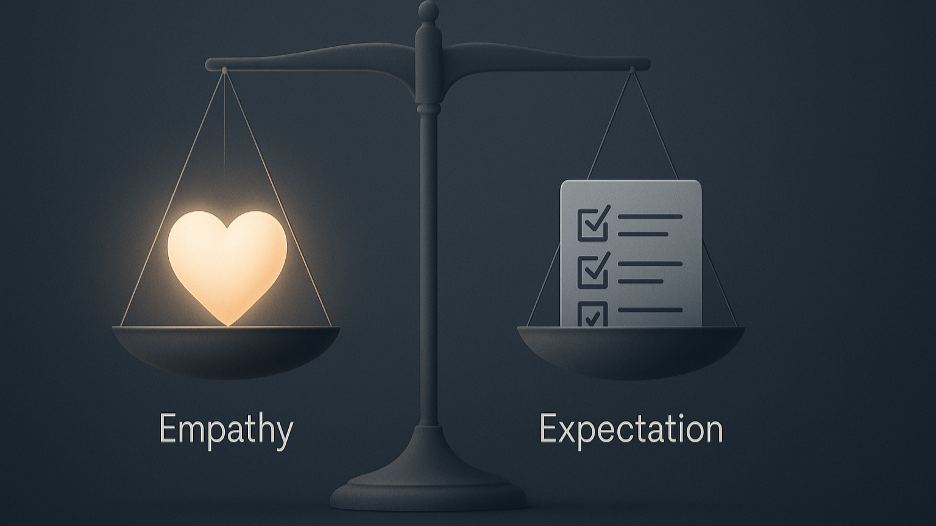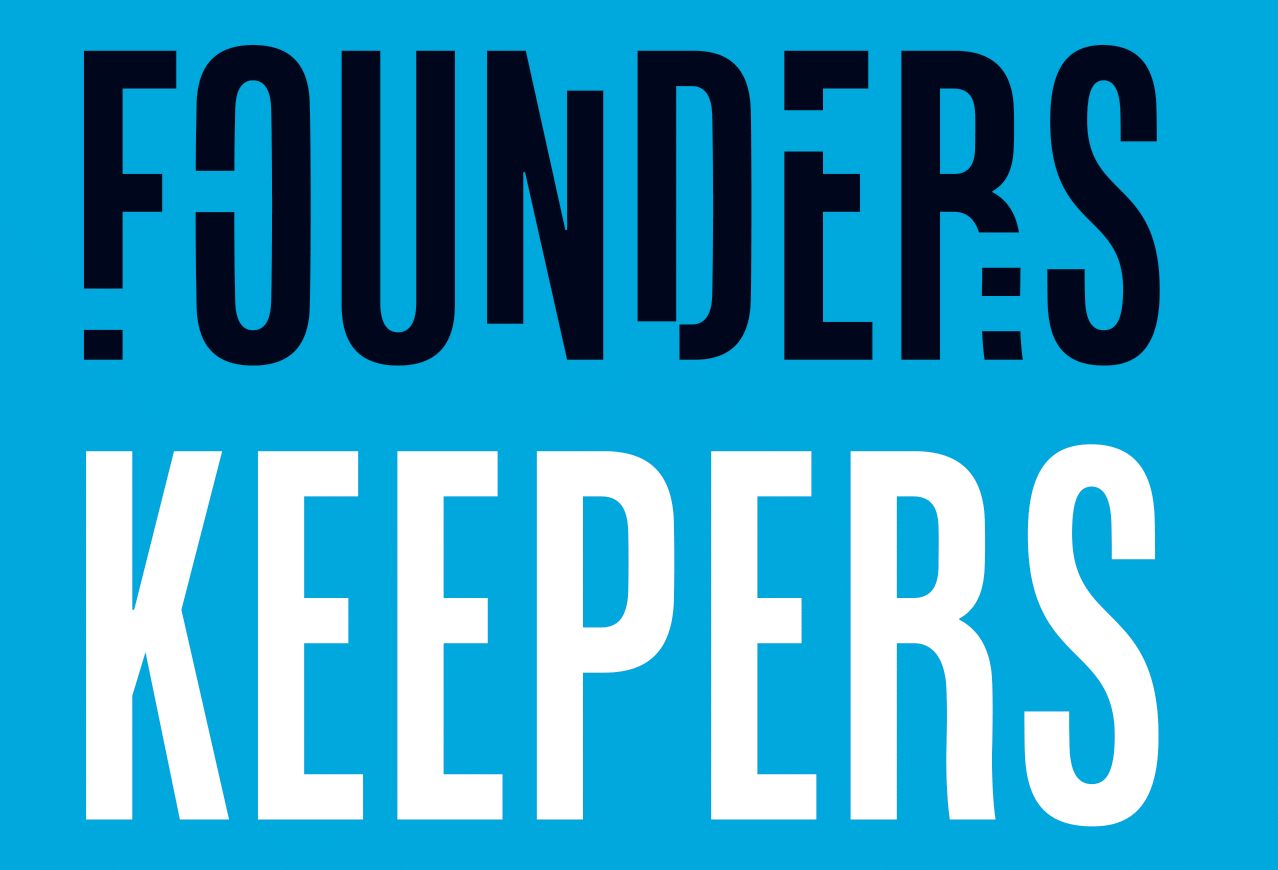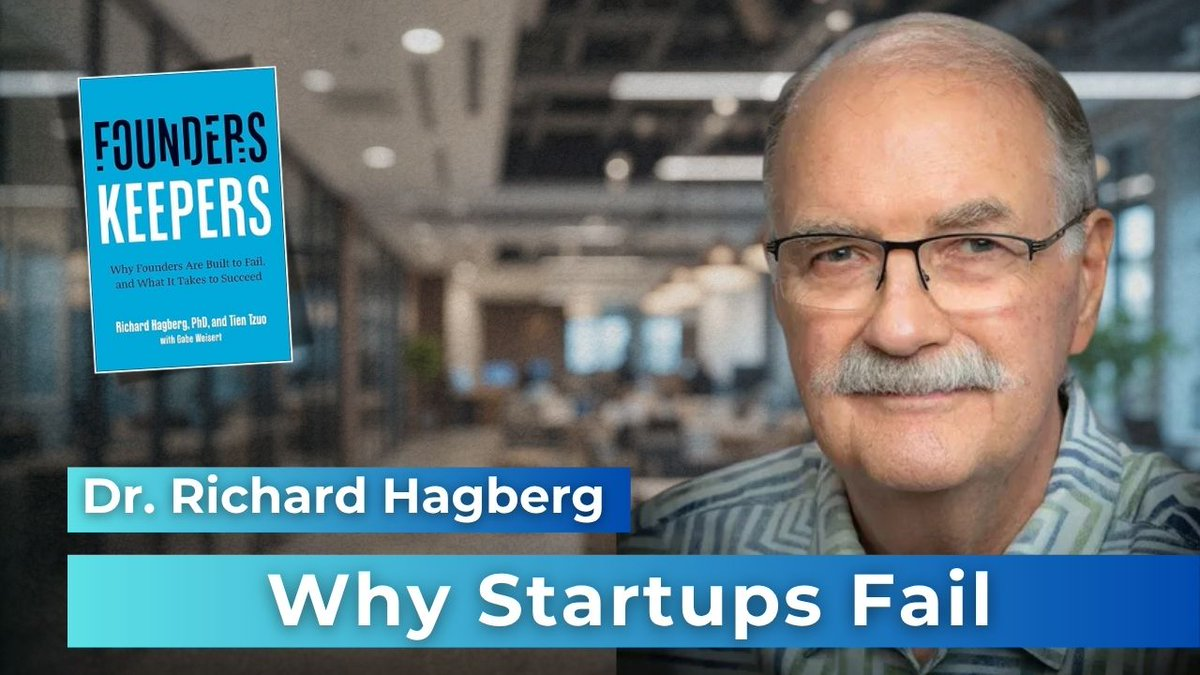Article
Adaptability: The Founder’s Lifeline
September 30, 2024

In the world of startups, there’s a myth many founders cling to once you’ve found product-market fit, your job is done. You’ve cracked the code. Success will naturally follow. But here’s the harsh reality: product-market fit is never "done." Markets shift, competitors pounce, customer expectations evolve. The strategy that worked brilliantly yesterday could be irrelevant tomorrow. Adaptability isn’t just a useful trait; it’s the founder’s lifeline. Without it, you’re on borrowed time.
In my years of coaching founders, one story stands out—a textbook case of brilliance undone by ego. A founder had an early win with a groundbreaking SaaS product, disrupting a major competitor and gaining massive market share. But success quickly bred arrogance. He refused to listen—to customers, advisors, or his team—thinking he knew best. He overloaded the product with unnecessary features, losing focus on what made it great in the first place. His defensive attitude crushed any room for differing opinions, driving his core users away. The very strength that fueled his initial success became the weakness that led to his downfall.
The Dangerous Comfort of Success Think back to your early days. When you started your company, everything was about survival. You were scrappy, flexible, and willing to pivot on a dime. You had to be. But as your startup grows, something dangerous happens—you become comfortable. It’s a subtle shift, but it’s deadly. The focus moves from experimentation to preservation. You start protecting what you’ve built rather than pushing the boundaries of what’s possible.
And here’s the kicker: that moment, when you feel like you’ve made it, is when you’re most vulnerable.
Let’s face it: being a founder is terrifying. You’ve built your identity on being the person with the vision, the one who had the audacity to challenge the status quo. But once that vision becomes reality, what next? How do you stay relevant when everything around you is shifting? How do you stay flexible when the very company you created is starting to demand rigidity?
Product-Market Fit is an Illusion Most founders treat product-market fit like the Holy Grail—once you’ve got it, you’re golden. But the truth is, product-market fit is not a final destination; it’s a moving target. It’s a dynamic process that’s constantly evolving.
Think about companies like Blockbuster or Kodak—giants that became obsolete because they thought they had secured their market position. The world around them changed, but they didn’t. They failed to adapt, and now they’re cautionary tales.
If you’re a founder reading this, ask yourself: Are you keeping up? Are you too comfortable? Are you still innovating, or are you coasting on the momentum of past wins?
Here’s the uncomfortable truth: if your product or service worked six months ago, that doesn’t guarantee it will work six months from now. Your competitors are innovating. Your customers are changing. The question is: are you?
Founders Are Often the Problem Let’s be brutally honest. You might be the biggest obstacle to your company’s adaptability. You built this company, and deep down, you believe you know what’s best. That’s where founders often fail.
You have blind spots—whether it’s being too emotionally attached to your original idea or not listening to your team’s insights about the changing market. Maybe you’re reluctant to admit that your once-perfect product needs a drastic overhaul. You might even be that founder who thinks, "My instincts got me this far; why change now?"
But here’s the problem: what got you here won’t get you there. Your initial vision was just that—an initial vision. Sticking to it too rigidly is a fast track to irrelevance.
Adapt or Die: The Founder’s Dilemma Adaptability is about more than just making minor tweaks to your product or marketing strategy. It’s about being willing to change the entire way you think. It’s about embracing the idea that your original concept might need to be torn down and rebuilt. Our research on 122 founders shows that those that are most successful are more adaptable. Founders in general are adaptable but the really the successful ones, unicorns or almost unicorns, are more willing to change, learn and iterate and change both their company and their own leadership.
So, how do you cultivate that level of adaptability as a founder? Here are three hard truths to consider:
The Risk of Not Evolving Here’s what happens if you don’t adapt: your competitors will. They’ll come in, identify the gaps you’re not addressing, and take over. If you’re too slow to evolve, you’re handing them the keys to your future. Adaptability is the difference between a company that stays in the game and one that fades into irrelevance.
Think about companies like Slack or Instagram. Neither of these businesses started out as the products we know today. They pivoted—hard—and it paid off. They recognized the need to change direction long before it was too late. That’s adaptability in action.
Now, imagine your company five years from now. Are you still pushing boundaries, or are you stuck defending an outdated product? Have you evolved with your market, or are you just hoping your competitors don’t out-innovate you?
How to Become More Adaptable
Final Thoughts: You’re Never “There” Here’s the thing about adaptability: it’s not a one-time skill you master and move on from. It’s a mindset. It’s the ability to look at your company and the world around you and recognize when it’s time to make a change—even if that change is uncomfortable.
If you’re a founder who’s afraid that your current success might be temporary, good. That fear is what will keep you adaptable. Lean into it. Use it as a reminder that no matter how successful your startup is today, the landscape is always shifting. Your job is to keep evolving or risk being left behind.
Founders who thrive are the ones who never stop questioning, never stop learning, and never stop adapting. Are you one of them?
In my years of coaching founders, one story stands out—a textbook case of brilliance undone by ego. A founder had an early win with a groundbreaking SaaS product, disrupting a major competitor and gaining massive market share. But success quickly bred arrogance. He refused to listen—to customers, advisors, or his team—thinking he knew best. He overloaded the product with unnecessary features, losing focus on what made it great in the first place. His defensive attitude crushed any room for differing opinions, driving his core users away. The very strength that fueled his initial success became the weakness that led to his downfall.
The Dangerous Comfort of Success Think back to your early days. When you started your company, everything was about survival. You were scrappy, flexible, and willing to pivot on a dime. You had to be. But as your startup grows, something dangerous happens—you become comfortable. It’s a subtle shift, but it’s deadly. The focus moves from experimentation to preservation. You start protecting what you’ve built rather than pushing the boundaries of what’s possible.
And here’s the kicker: that moment, when you feel like you’ve made it, is when you’re most vulnerable.
Let’s face it: being a founder is terrifying. You’ve built your identity on being the person with the vision, the one who had the audacity to challenge the status quo. But once that vision becomes reality, what next? How do you stay relevant when everything around you is shifting? How do you stay flexible when the very company you created is starting to demand rigidity?
Product-Market Fit is an Illusion Most founders treat product-market fit like the Holy Grail—once you’ve got it, you’re golden. But the truth is, product-market fit is not a final destination; it’s a moving target. It’s a dynamic process that’s constantly evolving.
Think about companies like Blockbuster or Kodak—giants that became obsolete because they thought they had secured their market position. The world around them changed, but they didn’t. They failed to adapt, and now they’re cautionary tales.
If you’re a founder reading this, ask yourself: Are you keeping up? Are you too comfortable? Are you still innovating, or are you coasting on the momentum of past wins?
Here’s the uncomfortable truth: if your product or service worked six months ago, that doesn’t guarantee it will work six months from now. Your competitors are innovating. Your customers are changing. The question is: are you?
Founders Are Often the Problem Let’s be brutally honest. You might be the biggest obstacle to your company’s adaptability. You built this company, and deep down, you believe you know what’s best. That’s where founders often fail.
You have blind spots—whether it’s being too emotionally attached to your original idea or not listening to your team’s insights about the changing market. Maybe you’re reluctant to admit that your once-perfect product needs a drastic overhaul. You might even be that founder who thinks, "My instincts got me this far; why change now?"
But here’s the problem: what got you here won’t get you there. Your initial vision was just that—an initial vision. Sticking to it too rigidly is a fast track to irrelevance.
Adapt or Die: The Founder’s Dilemma Adaptability is about more than just making minor tweaks to your product or marketing strategy. It’s about being willing to change the entire way you think. It’s about embracing the idea that your original concept might need to be torn down and rebuilt. Our research on 122 founders shows that those that are most successful are more adaptable. Founders in general are adaptable but the really the successful ones, unicorns or almost unicorns, are more willing to change, learn and iterate and change both their company and their own leadership.
So, how do you cultivate that level of adaptability as a founder? Here are three hard truths to consider:
- You’re Not as Self-Aware as You Think. Most founders believe they’re flexible, but their actions say otherwise. Based on our research on financially successful founders (MOIC of 10x) only the most successful founders take adaptability to the next level. They listen to feedback and look at the facts rather than defending their ego’s need to be right. So, if you find yourself repeatedly dismissing feedback, brushing off customer complaints, or sticking to your initial vision despite mounting evidence to the contrary, you’re not adaptable—you’re stubborn. Recognize that your instinct might be wrong, and that adaptability starts with humility.
- Your Team Sees What You Don’t. The people around you—your employees, your investors, your customers—are constantly giving you signals about what’s working and what isn’t. Are you paying attention? Or are you so caught up in your role as the “visionary” that you’ve tuned out everyone else? Adaptability means leveraging the wisdom of those around you, not pretending you have all the answers.
- Speed is Everything. The faster you can recognize that something isn’t working, the quicker you can pivot. Founders who adapt quickly are the ones who survive. If you wait for the data to conclusively tell you that your product is losing traction, it’s already too late. Don’t wait for the market to hit you in the face—anticipate the shift and move.
The Risk of Not Evolving Here’s what happens if you don’t adapt: your competitors will. They’ll come in, identify the gaps you’re not addressing, and take over. If you’re too slow to evolve, you’re handing them the keys to your future. Adaptability is the difference between a company that stays in the game and one that fades into irrelevance.
Think about companies like Slack or Instagram. Neither of these businesses started out as the products we know today. They pivoted—hard—and it paid off. They recognized the need to change direction long before it was too late. That’s adaptability in action.
Now, imagine your company five years from now. Are you still pushing boundaries, or are you stuck defending an outdated product? Have you evolved with your market, or are you just hoping your competitors don’t out-innovate you?
How to Become More Adaptable
- Kill Your Darlings. That brilliant idea that got you here? Be willing to kill it if the market demands it. Holding onto it too long is a sure way to become irrelevant.
- Surround Yourself with People Who Challenge You. If your team always agrees with you, you’re in trouble. You need dissenters—people who aren’t afraid to tell you that your idea sucks. Listen to them. They’re not your enemies; they’re your lifeline.
- Make Data Your North Star. Gut instinct is great, but data doesn’t lie. If your customer behavior or market trends are telling you something, don’t ignore it. The numbers should guide your next move, not your ego.
- Iterate Relentlessly. Continuous improvement is the name of the game. If you’re not constantly tweaking, refining, and rethinking, you’re falling behind. Stay agile, stay curious, and never be satisfied with the status quo.
Final Thoughts: You’re Never “There” Here’s the thing about adaptability: it’s not a one-time skill you master and move on from. It’s a mindset. It’s the ability to look at your company and the world around you and recognize when it’s time to make a change—even if that change is uncomfortable.
If you’re a founder who’s afraid that your current success might be temporary, good. That fear is what will keep you adaptable. Lean into it. Use it as a reminder that no matter how successful your startup is today, the landscape is always shifting. Your job is to keep evolving or risk being left behind.
Founders who thrive are the ones who never stop questioning, never stop learning, and never stop adapting. Are you one of them?
share this
Related Articles
Related Articles

The Nicest Boss in the World He was adored. He remembered birthdays, checked in on people’s families, and stayed late helping fix slides no one asked him to touch. His team called him “the best boss we’ve ever had.” He was also running on fumes. Behind the warm smile was a leader quietly burning out — drowning in everyone else’s problems, too empathetic for his own good. If you’re a leader who prides yourself on caring deeply, this might sting a little: empathy, taken too far, becomes control in disguise. Empathy’s Secret Shadow Empathy is essential for leadership. It builds loyalty, safety, and trust. But the same trait that makes people feel seen can also make them dependent. When you can’t tolerate someone else’s discomfort, you start protecting them from it. You step in to fix, to soothe, to rescue. It looks noble. It feels generous. But it quietly steals agency — theirs and yours. Your team stops growing because you’re doing their emotional labor. You stop leading because you’re managing feelings instead of outcomes. That’s the hidden cost of care. The Emotional Guilt Loop Over-empathetic leaders live in a constant tug-of-war between compassion and guilt. They think: “They’re already stretched — I can’t pile more on.” “If I push harder, I’ll seem uncaring.” “I’ll just do it myself; it’s easier.” Sound familiar? That’s not empathy anymore. That’s guilt masquerading as kindness. And guilt makes terrible business decisions. Because guilt doesn’t guide you toward what’s right. It just steers you away from what feels uncomfortable. A Founder’s Story One founder I coached, let’s call her Lina, led with heart. She built her company around “people first.” And she meant it. But somewhere along the way, “people first” turned into “me last.” She couldn’t say no. She kept saving underperformers, approving vacations during crunch time, rewriting others’ work to spare them stress. Her team adored her — until they didn’t. Because beneath her helpfulness was quiet resentment. And resentment always leaks. The breakthrough came when she realized something simple but hard: “I was protecting people from learning the hard parts of growth.” That’s when she started leading again instead of parenting. When Caring Becomes Control Here’s the paradox: the more you care, the more you risk over-controlling. You jump in to fix not because you don’t trust them, but because you feel for them. It’s empathy turned inward — I can’t stand watching them struggle. But leadership isn’t about eliminating discomfort. It’s about using it wisely. People grow by stretching, not by being spared. When you save someone from every failure, you’re also saving them from competence. The Biology of Burnout Chronic empathy triggers chronic stress. When you absorb other people’s emotions all day, your nervous system never gets a break. You start mirroring everyone’s anxiety like an emotional amplifier. Your brain thinks you’re in crisis — even when you’re not. That’s why over-caring leaders are often the first to burn out. Their compassion becomes constant cortisol. The irony? The leaders who want to create safety for others end up unsafe themselves. How to Care Without Carrying Feel, then filter. It’s okay to feel someone’s frustration. Just don’t keep it. Ask: “Is this mine to hold?” Help through accountability. Say, “I know this is tough, and I also need you to take ownership.” The and matters. Let discomfort be developmental. When a team member struggles, resist rescuing. Stay present, not protective. Coach before you comfort. Instead of “Don’t worry,” try, “What do you think your next move is?” Reframe empathy as empowerment. Caring isn’t about absorbing pain; it’s about believing people can handle it. Funny but True One exec I worked with told me, “Every time I stop helping, I feel like a jerk.” I said, “No — you feel like a leader. It just takes a while to tell the difference.” He laughed and said, “So… you’re telling me leadership feels bad at first?” I said, “Exactly. Growth always does.” The Cultural Ripple Effect When leaders overfunction, teams underfunction. When leaders hold space instead of taking space, teams rise. Empathy should expand others, not consume you. The healthiest cultures balance care and candor — support and stretch. They normalize struggle as part of the process instead of something to be hidden or rescued. That’s what real compassion looks like in motion. The Maturity of Tough Empathy Empathy without boundaries is exhaustion. Empathy with boundaries is wisdom. The mature version of empathy doesn’t say, “I’ll protect you.” It says, “I believe you can handle this — and I’ll walk beside you while you do.” That’s not cold. That’s developmental. Your Challenge This Week Notice where you’re rescuing someone instead of coaching them. Pause before you step in. Ask yourself, Am I helping because they need it — or because I need to feel helpful? Then take one small risk: let them handle it. They’ll probably surprise you. And you’ll feel lighter than you have in months. Final Word Caring is beautiful. It’s what makes you human. But unchecked empathy turns leaders into emotional pack mules — carrying what was never theirs to bear. Real leadership is still full of heart. It just remembers that compassion without accountability isn’t love. It’s fear. And the moment you stop rescuing everyone, you finally start freeing them — and yourself.s)

The Smart Leader’s Blind Spot It’s strange how often the smartest people make the worst decisions under pressure. They don’t lose IQ. They lose perspective. I’ve seen this happen more times than I can count. A sharp, decisive executive starts second-guessing every move. They overanalyze, overwork, and overcontrol — all in the name of being “thorough.” They think they’re being rational. But underneath the spreadsheets and meetings is something far less logical. It’s fear. The Fear That Doesn’t Look Like Fear We think of fear as panic — sweating, shaking, obvious. But most leadership fear hides behind competence. It shows up as perfectionism, busyness, overcommitment, indecision. It sounds like, “Let’s get more data.” “Let’s not rush this.” “Let’s keep this one close.” That’s not analysis. That’s avoidance with a better vocabulary. When fear runs the show, the goal subtly shifts from making the right decision to avoiding the wrong one. And those two things are worlds apart. The Cost of Fear-Based Leadership When leaders operate from fear, everything tightens. They stop listening. They rush to defend. They play small when the company needs boldness. They keep people who are loyal over people who are competent — because loyalty feels safer. And here’s the real tragedy: the team starts copying the fear. They become cautious, compliant, quiet. Pretty soon, no one’s leading anymore. They’re all managing risk — mostly emotional risk. A CEO’s Moment of Truth One CEO I coached — brilliant, confident, deeply human — was terrified of being wrong in front of his board. He masked it well. On the outside: decisive. Inside: a constant hum of anxiety. After a tough quarter, he admitted, “I realized half my decisions weren’t based on strategy — they were based on protecting my image.” That moment of honesty was the start of his maturity curve. Once he could name the fear, it stopped running his show. He didn’t become fearless. He became aware. And awareness is what turns reaction into wisdom. Why Fear Feels Safer Than Clarity Fear has a strange way of convincing us it’s caution. Caution whispers, “Slow down and look.” Fear screams, “Don’t move.” The first sharpens judgment. The second paralyzes it. And the more we listen to fear, the more it disguises itself as prudence. That’s why emotional maturity isn’t about suppressing fear. It’s about being able to say, “Ah, that’s fear talking — not fact.” How Fear Distorts the Mind Here’s what happens when fear hijacks leadership: Tunnel vision: You fixate on the immediate threat and forget the big picture. Confirmation bias: You start looking for data that validates your anxiety. Short-termism: You make safe decisions that feel good now and cause pain later. Blame shifting: You protect your ego by pushing ownership outward. The mind gets smaller. The leader gets reactive. The company gets stuck. The Maturity Shift Emotional maturity isn’t about being unshakable. It’s about staying curious in the presence of fear. Mature leaders don’t pretend they’re fearless. They just don’t let fear make the decisions. They pause, breathe, and ask, “What part of this is data, and what part is my insecurity talking?” That single question can change everything. A Founder’s Story A founder I worked with once said, “I’m not afraid — I just have high standards.” But as we unpacked it, he realized those “high standards” were actually a way to control outcomes. He feared disappointment — his own and others’. When he finally stopped trying to protect his reputation and started protecting his clarity, his decisions got faster and cleaner. The business didn’t just grow — it started breathing again. Because when you stop trying to look right, you finally have room to be right. Funny, But True I once asked a CEO what he’d do differently if he weren’t afraid of failing. He said, “Probably the same things I’m doing now — just with less Advil.” That’s the thing: most leaders already know what to do. Fear just makes it hurt more. How to Lead Without Fear (Even When It’s There) Name it early. The sooner you recognize fear, the less power it has. Ask yourself, “What’s the story fear’s telling me right now?” Reframe mistakes as tuition. You’ll still pay for errors — might as well learn something from them. Separate identity from outcome. A bad decision doesn’t mean a bad leader. It means a leader who’s still learning — like everyone else. Keep one truth-teller nearby. Someone who loves you enough to tell you when you’re acting from ego. Practice micro-bravery. Tell one hard truth a day. Say “I don’t know” once a week. Let discomfort become strength training. The Paradox of Fear Fear doesn’t make you weak. It means you care. But if you never face it, it becomes your compass — and it always points backward. Courage, maturity, clarity — they’re not opposites of fear. They’re what happen when you stop running from it. Your Challenge This Week Next time you feel that knot in your stomach — before a board meeting, a tough conversation, a high-stakes call — pause. Ask yourself: What am I afraid might happen? Then ask: What might happen if I act from clarity instead of fear? That’s not therapy. That’s leadership hygiene. Final Word The mark of maturity isn’t fearlessness. It’s self-awareness. You can’t control your fear. But you can choose whether it sits in the driver’s seat or the passenger’s. Great leaders don’t wait for fear to disappear. They lead with it beside them — quietly, respectfully — but never in charge.

The Charisma Illusion Charisma gets all the press. It fills conference rooms, wins funding rounds, and dominates the LinkedIn highlight reel. We treat it like the gold standard of leadership — as if volume equals vision. But charisma is a sugar high. It spikes energy, then crashes trust. Composure, on the other hand — quiet, grounded, centered composure — is the kind of influence that lasts. It doesn’t light up a room; it settles one. When things go sideways, it’s not the charismatic leader people look for. It’s the calm one. The Crisis Test Picture this. The product just failed. The client’s furious. Your team’s pacing like trapped cats. Two leaders walk in. One storms into action — loud, fast, “What the hell happened here?” The other walks in slowly, looks around, and says, “Okay, let’s breathe. What do we know so far?” The first one gets attention. The second one gets results. That’s emotional geometry — the calmest person in the room reshapes everyone else’s state. Why Calm Is the Real Power When you stay composed, you’re not just managing your emotions — you’re regulating the entire system. Here’s the neuroscience behind it: people mirror the nervous system of whoever has the most authority. If you’re grounded, they sync to your rhythm. If you’re frantic, they sync to that instead. You don’t need to lecture anyone on resilience. You just have to model it. It’s not charisma that makes people trust you; it’s the quiet sense that you’re not going to lose your mind when things get hard. Charisma’s Half-Life Charisma is a spark. It can ignite a team — but if there’s no composure beneath it, the whole thing burns out. You’ve seen this movie before: the leader who rallies everyone with a passionate all-hands speech, then disappears into reaction mode when things get messy. Charisma without composure is like caffeine without sleep. You’re awake, but you’re not steady. Composure doesn’t get the applause. It gets the loyalty. A Founder’s Story One founder I worked with — I’ll call him David — was known for being a “high-voltage” guy. He could pitch an investor, fire up a crowd, or talk anyone into anything. But his team? They were walking on eggshells. His energy filled every room, but it left no oxygen for anyone else. During one session, I asked, “When you raise your voice, what happens to theirs?” He went quiet. That was the moment he understood that his passion — the thing he was most proud of — had become the team’s anxiety. A year later, his team described him differently: “He’s still intense, but steady. We trust him more now.” He didn’t lose charisma; he layered it with composure. The Calm Before the Influence Here’s what composure actually looks like: You listen longer. Because real influence starts with attention, not argument. You breathe before reacting. That pause isn’t weakness; it’s power management. You let silence do the work. Charisma fills every space; composure creates space for others to step in. You own your tone. You realize your sighs, your speed, your face — they’re all communication tools whether you intend them or not. You choose steadiness over certainty. People don’t need you to know everything. They just need to know you’re okay not knowing. Funny But True A client once told me, “When I’m calm in a meeting, people assume I’m hiding something.” I said, “Good. Let them wonder.” That’s how unfamiliar calm has become. In some cultures, composure looks radical — even suspicious. But it’s exactly what people crave in a world that never shuts up. Why Charisma Is Easier (and More Addictive) Charisma gets feedback. You see the energy rise, you feel the applause. It’s visible. Composure feels invisible — until you lose it. No one thanks you for staying calm during a crisis. But they remember it when deciding whether to follow you into the next one. That’s why maturity in leadership means getting comfortable with the quiet wins — the meeting that didn’t spiral, the argument that didn’t happen, the team that stayed focused because you did. The Emotional Geometry in Practice Think of composure as geometry because emotions move through space. When you enter a room, you alter its emotional shape. If you radiate calm, people’s shoulders drop. Their thinking widens. They start contributing. If you radiate stress, the room contracts. People shrink. Ideas vanish. Influence isn’t what you say. It’s the energy field you create. Your Challenge This Week Before your next high-stakes meeting, pause outside the door. Take one deep breath and ask yourself: What energy does this room need from me right now? Then bring only that. Nothing more. You’ll be amazed how fast everything slows down when you do. Final Word Charisma captures attention. Composure builds trust. One is about how loudly you shine; the other is about how steadily you glow. The leader who can stay centered when everyone else is spinning doesn’t just have influence — they are the influence. And that’s the kind of power that never burns out.
STAY UP TO DATE
GET PATH'S LATEST
Receive bi-weekly updates from the church, and get a heads up on upcoming events.
Contact Us








